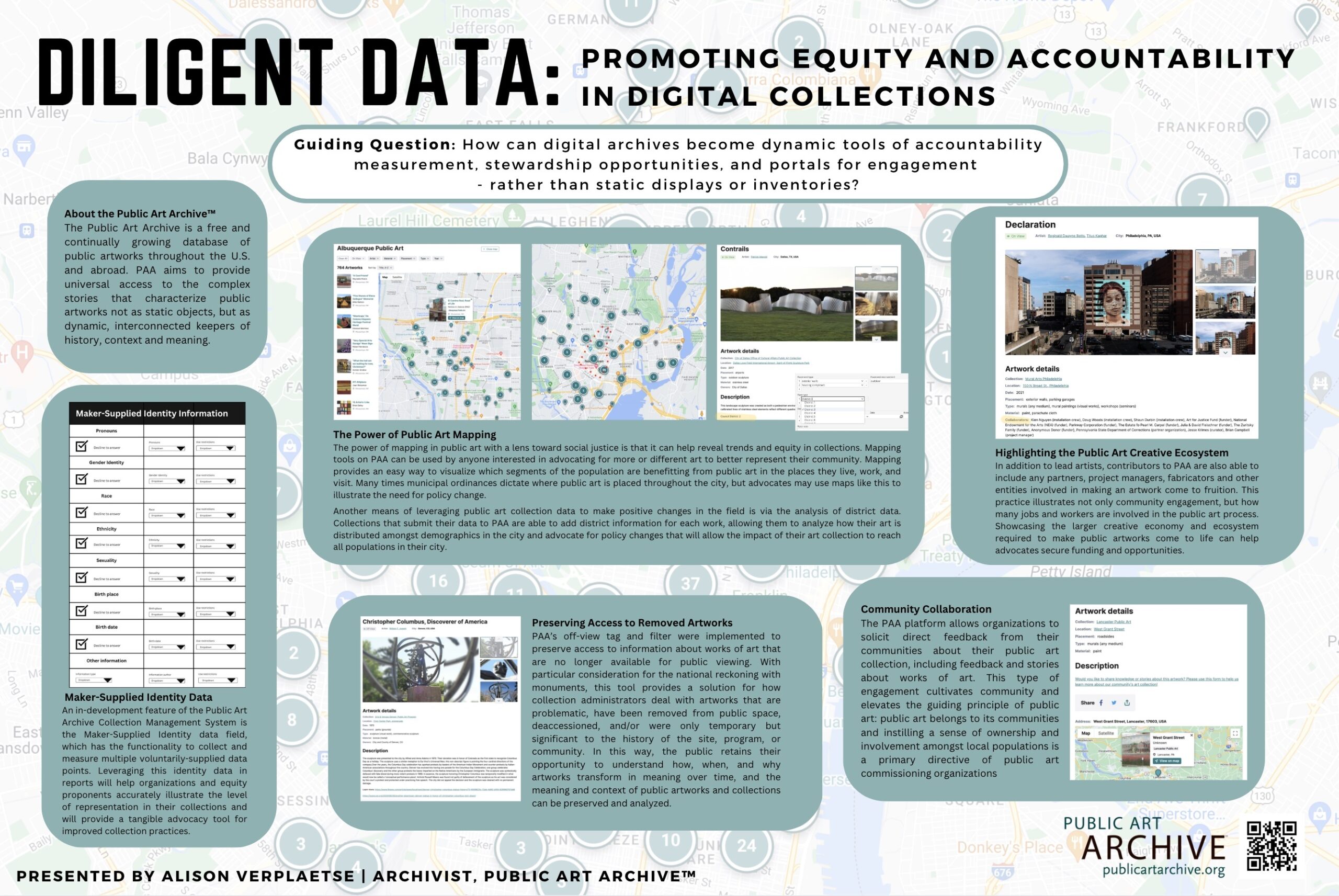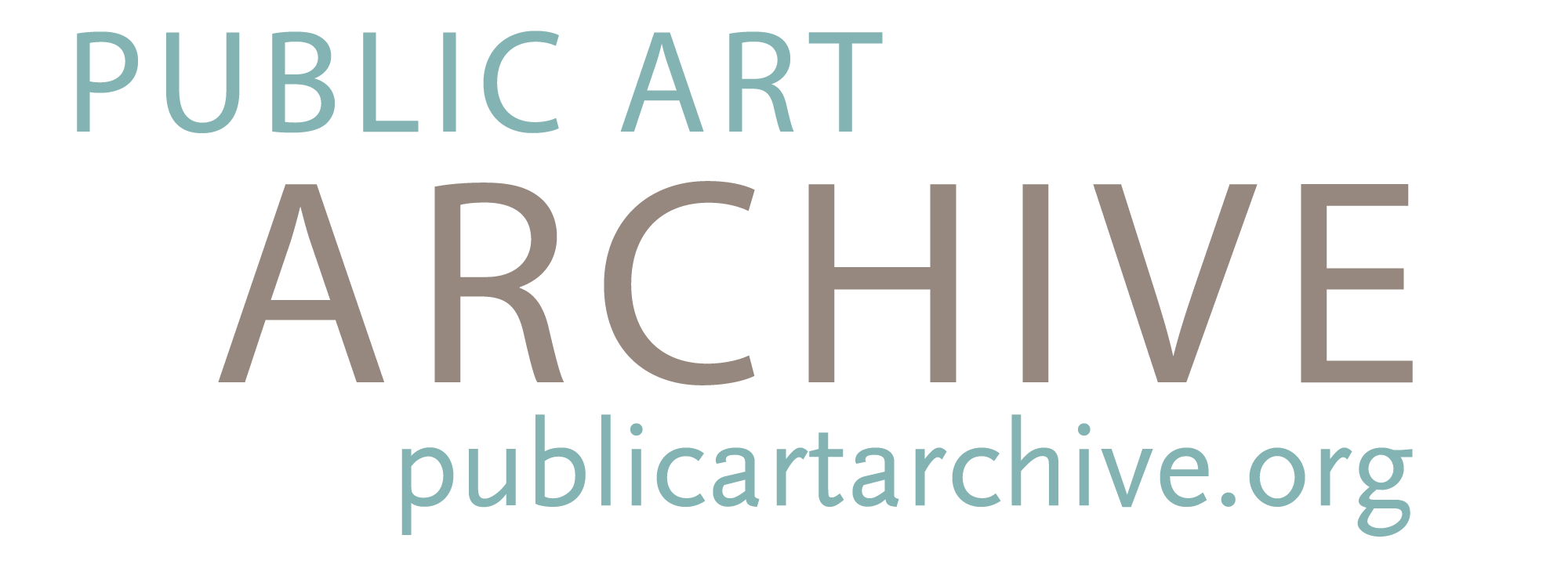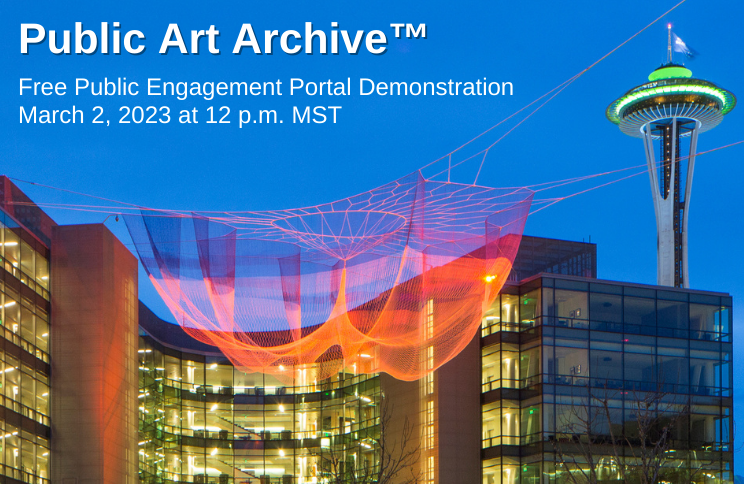Earlier this month, the Public Art Archive’s (PAA) Alison Verplaetse presented at the Midwest Archives Conference in Chicago, IL. Her presentation, Diligent Data: Promoting Equity & Accountability in Digital Collections, showcases how PAA can be used as a digital site of equity and transparency, as well as a discursive space to dig deeper into the critical analysis of and response to works of art over time. Utilizing digital archives in this way can offer ample opportunities to demonstrate and record how public art shapes and is in dialogue with its community while its meaning and impact changes over time.
In this mission to cultivate equity and accountability in data and digital archives, guiding questions for PAA are two-fold: How can the archival records activate the stories surrounding public art and public space? And how can digital archives become dynamic tools to act as accountability measures, stewardship opportunities, and portals for engagement, rather than visualizing collections and their art components as static objects?
In our efforts to capture the larger context and meaning of public artworks and collections, PAA’s digital tools and framework are challenged with providing a sense of balance to the organizations and artists with whom we work: the framework we provide for data collection must be standardized in order to gather consistent data that can be presented and analyzed in a central repository – one that must engage audiences of all backgrounds and levels and interest, while remaining flexible enough to capture the robust variety of data points we are receiving from those who manage collections. This interplay can pose a challenge to data structures and digital archives that need to provide ways to standardize classifications while also responding to the evolving needs of the field. Additionally, they must present context that engages the public and from which meaningful conclusions can be drawn.
The interactive poster below provides visualizations of key areas in which PAA has worked with partners to implement more equitable data practices and promote accountability between art collection owners/administrators and their communities. These practices include, but are not limited to: the development and implementation of new data fields like ‘maker-supplied identity’ to allow for tracking and evaluation of numerous collection diversity metrics, districts numbers, indigenous lands, collaborators, and on view/off view dates. These and several other data collection fields demonstrate important metrics as well as community engagement in the creative economy and can be used to advocate for policy changes that will allow the impact of public collections to reach all populations in a city.
A larger version of the poster can be viewed here.


